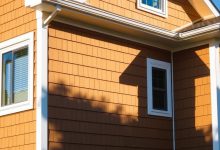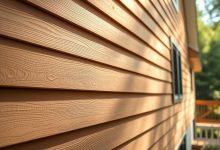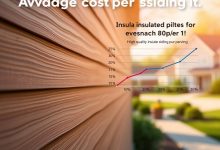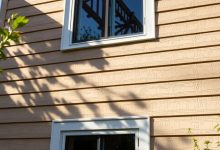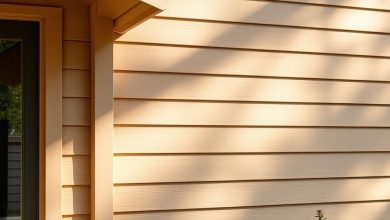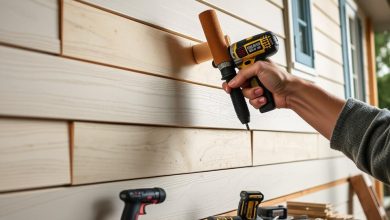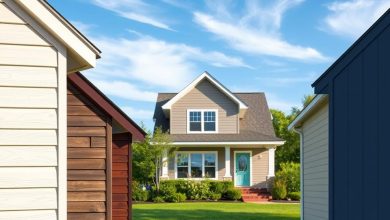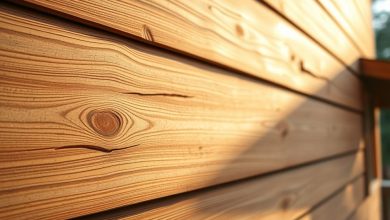Discover the Best Insulated Siding for Energy-Saving Homes
Homeowners are looking for ways to make their homes more energy-efficient. Installing energy-efficient siding is a great way to do this. It not only cuts down on energy use but also makes homes more comfortable and valuable.
Insulated siding acts as a thermal barrier. It keeps homes warm in winter and cool in summer. This can lead to big energy savings over time. In this article, we’ll look at the benefits of insulated siding and help you choose the best for your home.
Key Takeaways
- Understanding the role of insulated siding in energy efficiency
- Exploring the benefits of energy-efficient siding for homes
- Guidance on selecting the best insulated siding for energy-saving homes
- Insights into how insulated siding can lead to energy savings
- Tips for homeowners to make informed decisions about siding
Understanding Insulated Siding and Its Energy-Saving Benefits
Insulated siding is a smart way to make your home more energy-efficient. It combines siding with insulation. This combo helps keep your home warm in winter and cool in summer, saving you money on energy bills.
What Is Insulated Siding?
Insulated siding is siding that also has insulation. It’s different from regular siding because it adds an extra layer of insulation. This layer helps control your home’s temperature. It uses materials like foam and insulated panels to do this.
How Insulated Siding Improves Energy Efficiency
Insulated siding makes your home more energy-efficient. It stops heat from escaping, so you don’t need to use as much energy to heat or cool your home. This means lower bills and a cozier home. The U.S. Department of Energy says you could save up to 30% on energy costs.
R-Value Explained: Measuring Insulation Effectiveness
The R-Value shows how well insulation works. A higher R-Value means better insulation. When picking insulated siding, look at the R-Value to see if it’s right for you. In cold places, you’ll want a higher R-Value for better energy use.
Energy Star advises choosing siding with high R-Values. Think about your climate, the type of insulation, and how well it’s installed. Knowing about R-Value helps you pick the best insulated siding options for your home.
The Best Insulated Siding for Energy Savings: Top Options Compared
Looking for energy-efficient homes is key today. Homeowners face many choices in insulated siding. Each has its own benefits and drawbacks. Knowing these helps make a smart choice for saving energy.
Vinyl Insulated Siding
Vinyl insulated siding is loved for being affordable and easy to put up. It has a vinyl face and foam insulation on the back. This combo boosts your home’s energy use.
Vinyl siding is great because it fights pests and weather well. It’s also easy to care for and comes in many styles and colors. But, it might not last as long as other materials and can fade or crack.
Fiber Cement Insulated Siding
Fiber cement insulated siding is a strong choice. It’s made from cement, sand, and cellulose fibers. It looks like wood but needs less upkeep.
This siding is tough and can stand up to weather and pests. But, it’s heavier and harder to install than vinyl. This might raise labor costs.
Insulated Steel Siding
Insulated steel siding combines steel’s strength with insulation’s energy-saving perks. It’s durable and can handle tough weather, making it good for many places.
Steel siding’s big plus is its high R-value, leading to big energy savings. But, it might need extra protection against rust. It’s also pricier than some other choices.
Wood-Based Insulated Siding Options
Wood-based insulated siding includes engineered wood or wood composites. They offer a natural look and insulation. These materials are eco-friendly and add a special charm to homes.
Wood options can face pest and weather issues, but new tech has made them better. They need more care than others but bring a unique beauty that boosts your home’s value.
Vinyl Insulated Siding: The Popular Choice
Vinyl insulated siding is a top pick for homeowners. It balances cost and performance well.
It comes in many styles and designs. This makes it easy to match or enhance a home’s look. Top brands offer high-quality vinyl insulated siding.
Leading Vinyl Insulated Siding Brands
Some leading brands in vinyl insulated siding include:
- CertainTeard: Known for its wide range of colors and styles.
- Georgia Pacific: Offers high-performance vinyl siding with advanced insulation.
- James Hardie: Provides durable and energy-efficient vinyl siding options.
These brands are known for quality and performance. They are popular among homeowners.
Cost vs. Performance Analysis
Cost versus performance is key when choosing vinyl insulated siding. The initial cost may be higher. But, long-term energy savings can make up for it.
An analysis of different vinyl insulated siding products can help homeowners decide.
Durability and Maintenance Requirements
Vinyl insulated siding is durable and easy to maintain. It resists fading, cracking, and weather damage.
Occasional cleaning is needed to keep it looking good. This simple routine can make the siding last longer.
In summary, vinyl insulated siding is a great choice. It’s cost-effective, durable, and energy-efficient. Many homeowners choose it for these reasons.
Fiber Cement Insulated Siding: Durability Meets Efficiency
Fiber cement insulated siding is a great mix of strength and energy saving. It’s made to last and keep your home warm or cool. It’s perfect for those who want a strong and efficient exterior.
Top Fiber Cement Insulated Products
Many top brands make high-quality fiber cement insulated siding. Some of the best include:
- James Hardie: Known for their durable and versatile siding solutions.
- CertainTeed: Offers a range of fiber cement products with advanced insulation technology.
- Nichiha: Provides fiber cement siding with a focus on durability and aesthetic appeal.
Weather Resistance and Longevity
Fiber cement insulated siding is great at handling tough weather. It can:
- Moisture: Keep your home safe from water damage and rot.
- Extreme Temperatures: Stay strong in both hot and cold weather.
- Pests: It’s not a favorite snack for termites, unlike wood.
This makes the siding last longer, often with long warranties from the makers.
Installation Considerations
Installing fiber cement insulated siding needs some thought. Important things to remember include:
- Proper Handling: Care for it during transport and storage to avoid damage.
- Correct Installation Techniques: Make sure it’s installed right to last longer.
- Insulation Integration: Ensure the insulation works well with the fiber cement.
Insulated Steel and Aluminum Siding Options
Insulated metal siding, including steel and aluminum, is strong, durable, and energy-efficient. It’s a great choice for homeowners who want to enhance their home’s look and save on energy bills.
Premium Metal Siding with Insulation
Premium metal siding with insulation is very energy-efficient. The insulation keeps homes warm in winter and cool in summer. This can save a lot on heating and cooling costs.
Strength, Durability, and Energy Performance
Insulated steel and aluminum siding is loved for its strength and durability. It can handle harsh weather like heavy rain, hail, and extreme temperatures. Plus, it’s energy-efficient, which means you might not need as much extra insulation.
Cost Considerations for Metal Insulated Siding
While insulated steel and aluminum siding has many benefits, it can be pricier than other options. But, the long-term energy savings and durability can make it worth it. When choosing premium metal siding, consider your home’s size, climate, and budget.
Foam Backing Technologies: The Core of Insulated Siding
The secret to insulated siding’s energy-saving power is its foam backing. The type and setup of the foam are key to its success.
EPS vs. XPS Foam Insulation
Insulated siding uses two main types of foam: Expanded Polystyrene (EPS) and Extruded Polystyrene (XPS). EPS is known for its high insulating value and cost-effectiveness. On the other hand, XPS offers superior moisture resistance and a higher R-value per inch. The choice between EPS and XPS depends on the homeowner’s needs and the climate.
In coastal areas, XPS is often preferred for its moisture-resistant properties. For dry climates, EPS might be enough.
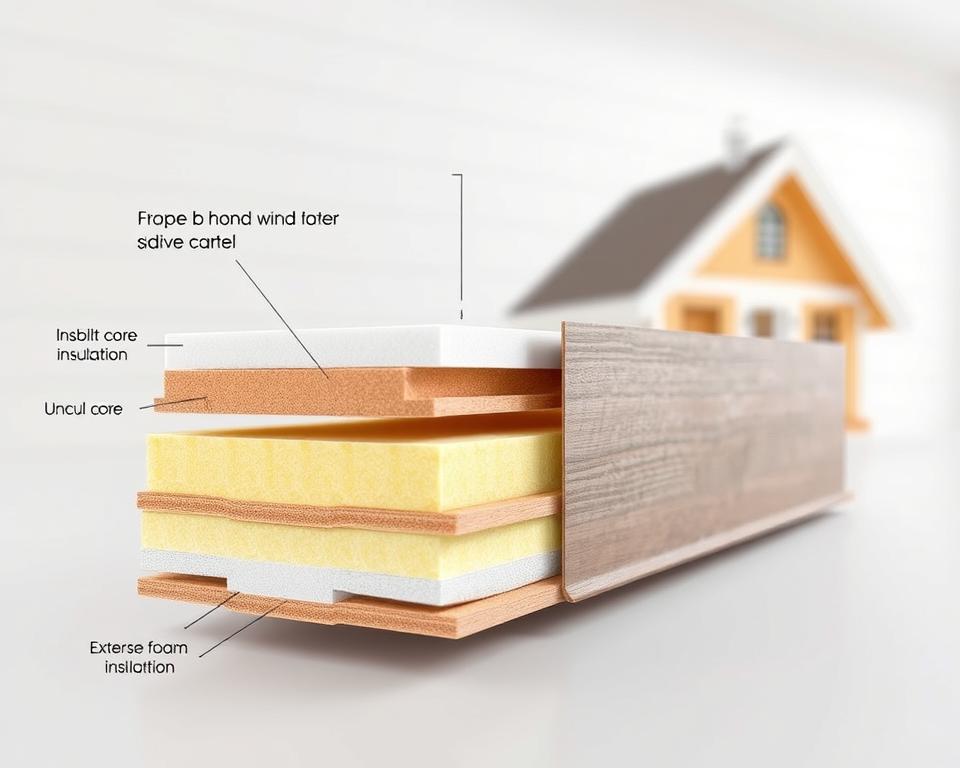
Contoured vs. Flat Foam Backing
The foam backing’s shape is also important. Contoured foam backing fits the siding’s shape, ensuring a tight fit and better insulation. Flat foam backing is easier to make and cheaper but might not insulate as well in some spots.
Latest Innovations in Siding Insulation
The siding industry is always improving, with new innovations in performance and sustainability. Some recent advancements include:
- Improved foam formulations that enhance insulation properties
- More sustainable materials, such as recycled content in foam insulation
- Advanced manufacturing techniques that reduce waste and improve product consistency
A comparison of key characteristics of EPS and XPS foam insulation is provided in the table below:
| Characteristics | EPS | XPS |
|---|---|---|
| R-value per inch | 3.8-4.0 | 5.0-5.5 |
| Moisture Resistance | Lower | Higher |
| Cost | Generally lower | Generally higher |
Regional Considerations: Choosing Insulated Siding by Climate
Different climates need different insulated siding choices. It’s key to pick siding that fits your local climate well. This ensures your home stays energy-efficient and durable.
Best Options for Cold Northern Climates
In cold northern areas, siding with a high R-value is a must. Vinyl insulated siding and foam-backed siding are top picks. They keep homes warm in the cold winter months.
Insulated Siding for Hot Southern Regions
In hot southern areas, siding helps cut cooling costs. Light-colored siding and reflective coatings are great. They help keep homes cool and reduce air conditioning work.
Solutions for Mixed and Coastal Climates
Mixed climates need siding that works well in both cold and warm weather. Coastal areas require siding that stands up to salt and wind. Fiber cement siding and insulated metal siding are good choices. They’re durable and weather-resistant.
Choosing the right insulated siding for your climate improves your home’s energy use. It also protects it from the weather.
Environmental Impact and Sustainability of Insulated Siding
Insulated siding boosts energy efficiency and lessens a home’s environmental impact. As more homeowners look for green options, it’s key to know about insulated siding’s sustainability.
Eco-Friendly Insulated Siding Materials
Some siding materials are better for the planet. For example, vinyl insulated siding uses recycled materials. Fiber cement siding is made from natural fibers and cement. These options cut down on waste and last longer, reducing the need for frequent replacements.
Energy Production Reduction and Carbon Footprint
Insulated siding helps cut down on energy use. It keeps homes cooler in summer and warmer in winter. This means less energy is needed, which lowers carbon emissions and helps the environment.
Recyclability and End-of-Life Considerations
How well insulated siding can be recycled varies. Some, like vinyl and metal, can be recycled when they’re no longer needed. Homeowners should think about how easily siding can be recycled or reused when choosing.
| Material | Eco-Friendliness | Recyclability |
|---|---|---|
| Vinyl Insulated Siding | High | Yes |
| Fiber Cement Siding | Medium | No |
| Insulated Steel Siding | High | Yes |
Cost Analysis: Investment vs. Energy Savings
Homeowners thinking about insulated siding need to look at the upfront costs and long-term savings. This helps understand the real value of insulated siding.
Initial Installation Costs by Material Type
The cost to install insulated siding changes based on the material. Vinyl insulated siding is often cheaper, costing $6 to $12 per square foot. On the other hand, fiber cement insulated siding is pricier, at $10 to $15 per square foot. This is because it’s durable and stands up well to weather.
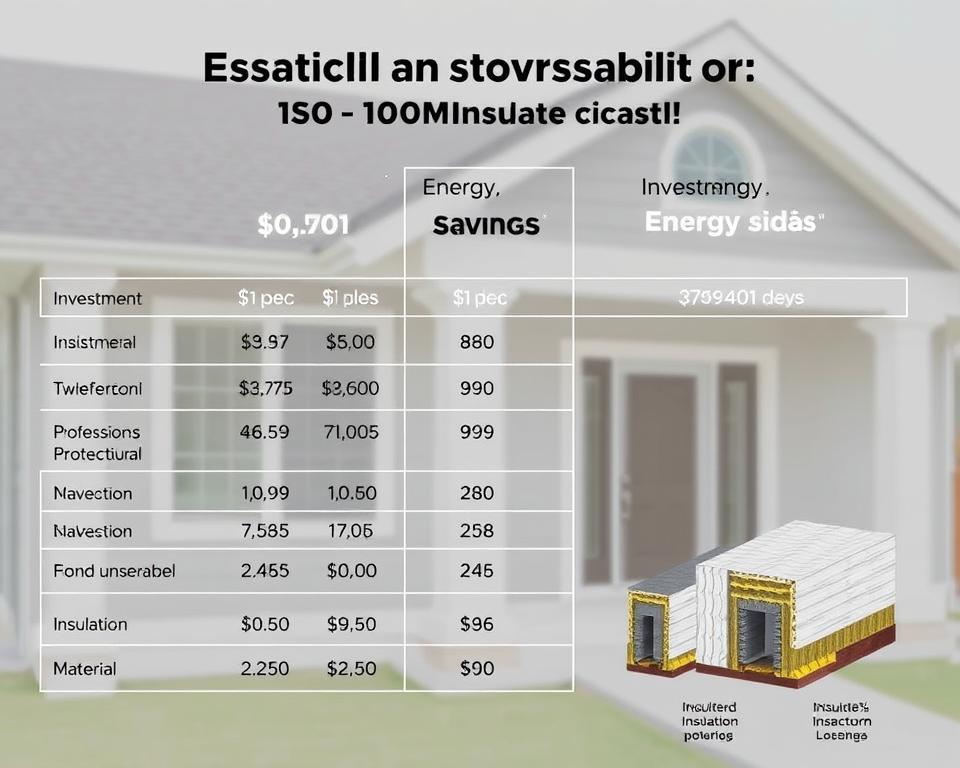
Long-Term Energy Savings Calculations
It’s not just about the initial cost. Long-term energy savings are also key. Insulated siding helps keep your home cooler in summer and warmer in winter. This can cut your energy bills by up to 30%.
For the average U.S. home, this means big savings every year. It’s a smart investment for your wallet and the planet.
Tax Credits and Incentives for Energy-Efficient Siding
There are also tax credits and incentives for energy-efficient siding. These vary by state and utility company. But they can help cover some of the initial costs.
For example, some utilities offer rebates for homes that meet energy standards. By looking at costs, savings, and incentives, you can decide if insulated siding is worth it for your home.
Conclusion: Making the Right Insulated Siding Choice for Your Home
Choosing the best insulated siding is key to saving energy and making your home more comfortable. There are many options like vinyl, fiber cement, insulated steel, and wood-based siding. Each has its own benefits and things to think about.
When picking energy-efficient siding, think about your climate, budget, and how well the material lasts. For example, vinyl is cheap and easy to care for. But fiber cement is very durable and stands up well to weather.
Knowing about the R-value and other important features of insulated siding helps you choose wisely. Whether you choose premium metal or traditional wood, the right siding saves energy and boosts your home’s value.
Investing in top-notch insulated siding is a wise move for your home and the planet. The right choice means a more comfy, energy-saving home and less harm to the environment.

